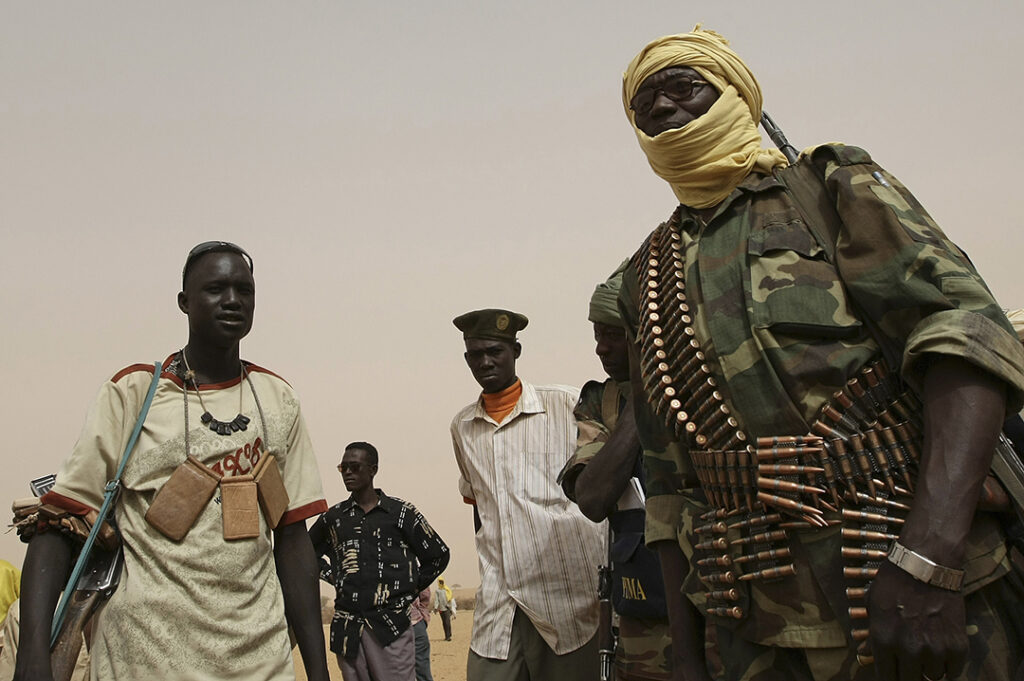ADF STAFF
While Sudan’s conflict between rival military leaders is being fought largely in the streets of Khartoum, experts say the fighting could shift to the Darfur region should the Sudan Armed Forces (SAF) drive the Rapid Support Forces (RSF) out of the capital.
For two decades, Sudan’s Darfur region has been the nexus for much of the country’s internal conflict, beginning with attacks by Janjaweed militias in 2003. The region is already experiencing spillover from fighting in Khartoum, with local RSF members and civilian residents arming themselves for battle.
More than 1,000 Darfuri residents have died since fighting erupted on April 15 between SAF chief Gen. Abdel Fattah al-Burhan and the RSF leader commonly known as Hemedti. The situation there could get worse, experts say.
“Darfur is going to be one of the biggest battlegrounds outside Khartoum,” analyst Kholood Khair, director of Khartoum’s Confluence Advisory think tank, told Middle East Eye. “It is important to both sides, even though the SAF can concentrate the fighting in Darfur and leave it there, very much as we have seen over the last 20 years.”
What makes Darfur so central to Sudan’s past and present conflicts?
Location: Darfur covers 500,000 square kilometers in western Sudan. While it is far from Khartoum, it is central to the greater region that includes the Central African Republic (CAR), Chad and Libya. Ethnic groups move easily across the region’s borders. Darfur’s central position could make it a magnet for criminals, mercenaries and other bad actors, creating a hive of instability, experts say.
Cross-border ties could keep the fighting contained or cause it to metastasize due to the influence of organizations such as Russia’s Wagner Group mercenaries. Wagner operates on both sides of the CAR-Sudan border and is active in southern Libya. Hemedti and Wagner share a common interest in smuggling Darfur’s gold, which has made Hemedti wealthy and helps fund Russia’s invasion of Ukraine.
Then there is Libya, where Wagner fighters are allied with Gen. Khalifa Haftar.
“Libya is a major black market logistics hub and, thus, an ideal base to launch attacks” Atlantic Council senior fellow Alia Brahimi recently wrote. A retreat to Darfur could open the entire region to fighting, bringing Libya into the fray, she added.
Potential battle lines in Darfur have begun forming along traditional ethnic lines separating Arabs and non-Arabs, according to observers.
“It’s one of the first places we are seeing ethnic mobilization take place,” Khair told Middle East Eye. “We are seeing much more of a civil war scenario [there] compared to Khartoum, where it is two armed actors fighting it out in a civilian setting rather than a civil war.”
RSF roots: The RSF evolved from Janjaweed militias that former dictator Omar al-Bashir recruited in 2003 to put down rebellions by the Sudan Liberation Movement/Army (SLM/A) and the Justice and Equality Movement (JEM). Hemedti rose from the Janjaweed to lead the RSF, which al-Bashir eventually empowered as a counterweight to the SAF.
The RSF’s headquarters remain in Darfur and it’s likely the group will retreat there if they are forced out of Khartoum, according to Khair. The centrality of Darfur and the proximity to Hemedti allies such as the Wagner Group in the CAR and Libya could make it easy for Hemedti to resupply and recruit more fighters. There are already reports of weapons moving into South Darfur from Wagner-dominated areas of the CAR through the Um Dafuq border crossing controlled by the RSF.
Writing for the Atlantic Council, senior fellow Alia Brahimi said Darfur’s border with Libya could make that country an important source of weapons, food, fuel and fighters for the RSF.
A recent report by CNN and All Eyes on Wagner tracked a Wagner Group cargo plane from its base in Libya to a Wagner base in Syria and back, then to an apparent airdrop of weapons over northwest Sudan. The SAF followed up by destroying the RSF base where the airdrop took place.
Bad blood: The SLM/A and JEM remain active in the region and oppose Hemedti and the RSF. Suliman Arcua “Minni” Minnawi, a former rebel leader, serves as governor of North Darfur. He removed his forces from Khartoum when fighting began in April. Both the SLM/A and the JEM, led by former Janjaweed member Musa Hilal, are aligned with the SAF and al-Burhan.
Darfur is also the home region of Sudanese Finance Minister Gibril Ibrahim, another Hemedti opponent. With Minnawi and Hilal, he could form an anti-Hemedti bloc that would complicate the RSF’s ability to regroup in Darfur, according to Khair.
The SLM/A and JEM are already positioning themselves as mediators and protectors of Darfur’s civilian population, which includes thousands of internally displaced people, according to Jerome Tubiana, former Sudan analyst for the International Crisis Group (ICG).
In the meantime, there are signs that civilians are fighting the RSF, though not necessarily on behalf of the SAF, according to ICG analyst Shewit Woldemichael.
As fighting between al-Burhan and Hemedti continues, the risk increases that the conflict will embroil ethnic groups in Darfur, according to Woldemichael. So far, there’s no sign that either al-Burhan or Hemedti is willing to back down to avoid broader bloodshed.
“They seem determined to continue fighting regardless of the high cost of this conflict,” Woldemichael told the ICG podcast “The Horn.”

